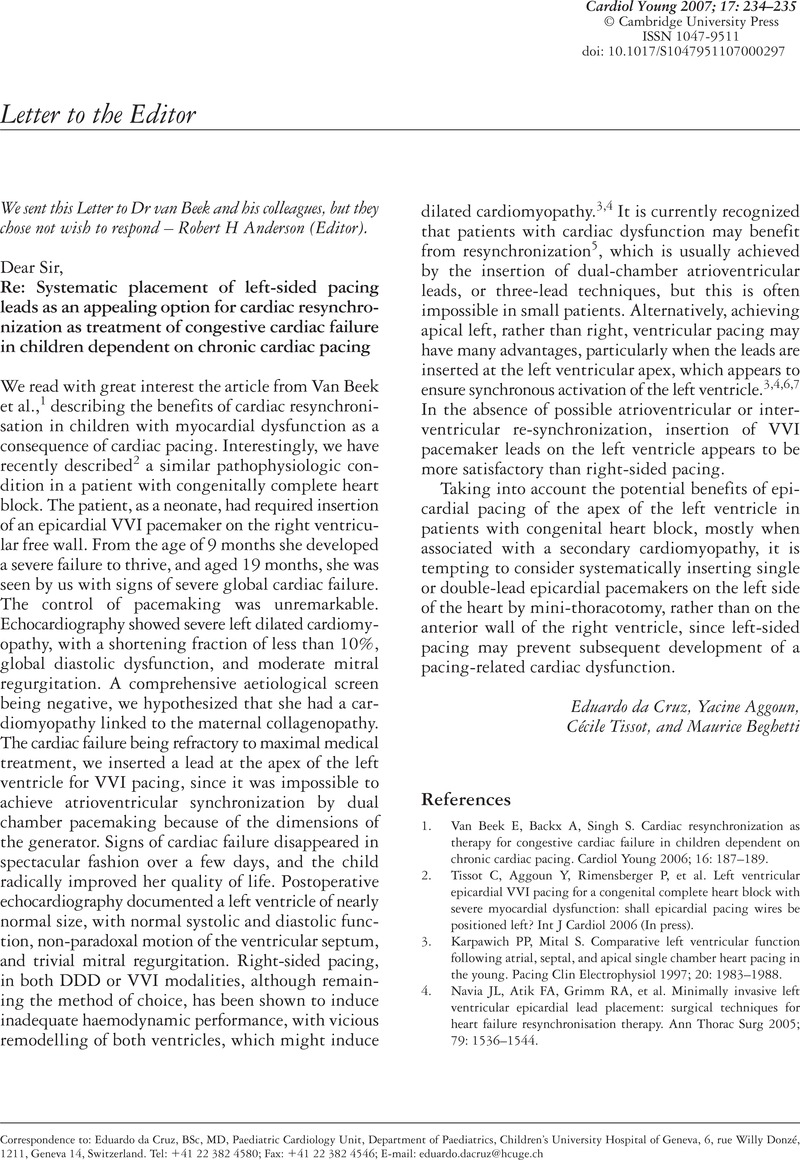No CrossRef data available.
Article contents
Letter to the Editor
Published online by Cambridge University Press: 12 February 2007
Abstract
An abstract is not available for this content so a preview has been provided. Please use the Get access link above for information on how to access this content.

- Type
- Letter to the Editor
- Information
- Copyright
- © 2007 Cambridge University Press
References
Van Beek E, Backx A, Singh S. Cardiac resynchronization as therapy for congestive cardiac failure in children dependent on chronic cardiac pacing. Cardiol Young 2006; 16: 187–189.Google Scholar
Tissot C, Aggoun Y, Rimensberger P, et al. Left ventricular epicardial VVI pacing for a congenital complete heart block with severe myocardial dysfunction: shall epicardial pacing wires be positioned left? Int J Cardiol 2006 (In press).Google Scholar
Karpawich PP, Mital S. Comparative left ventricular function following atrial, septal, and apical single chamber heart pacing in the young. Pacing Clin Electrophysiol 1997; 20: 1983–1988.Google Scholar
Navia JL, Atik FA, Grimm RA, et al. Minimally invasive left ventricular epicardial lead placement: surgical techniques for heart failure resynchronisation therapy. Ann Thorac Surg 2005; 79: 1536–1544.Google Scholar
Janousek J, Tomek V, Chaloupecky V, Gebauer RA. Dilated cardiomyopathy associated with dual-chamber pacing in infants: improvement through either left ventricular cardiac resynchronisation or programming off allowing intrinsic normal conduction. J cardiovasc Electrophysiol 2004; 15: 470–474.Google Scholar
Dodge-Khatami A, Kadner A, Dave H, Rahn M, Pretre R, Bauersfeld U. Left heart atrial and ventricular epicardial pacing through a left lateral thoracotomy in children: a safe approach with excellent functional and cosmetic results. Eur J Cardiothorac Surg 2005; 28: 541–545.Google Scholar
Vanagt WY, Verbeek XA, Delhaas T, et al. Acute hemodynamic benefit of left ventricular apex pacing in children. Ann Thorac Surg 2005; 79: 932–936.Google Scholar


